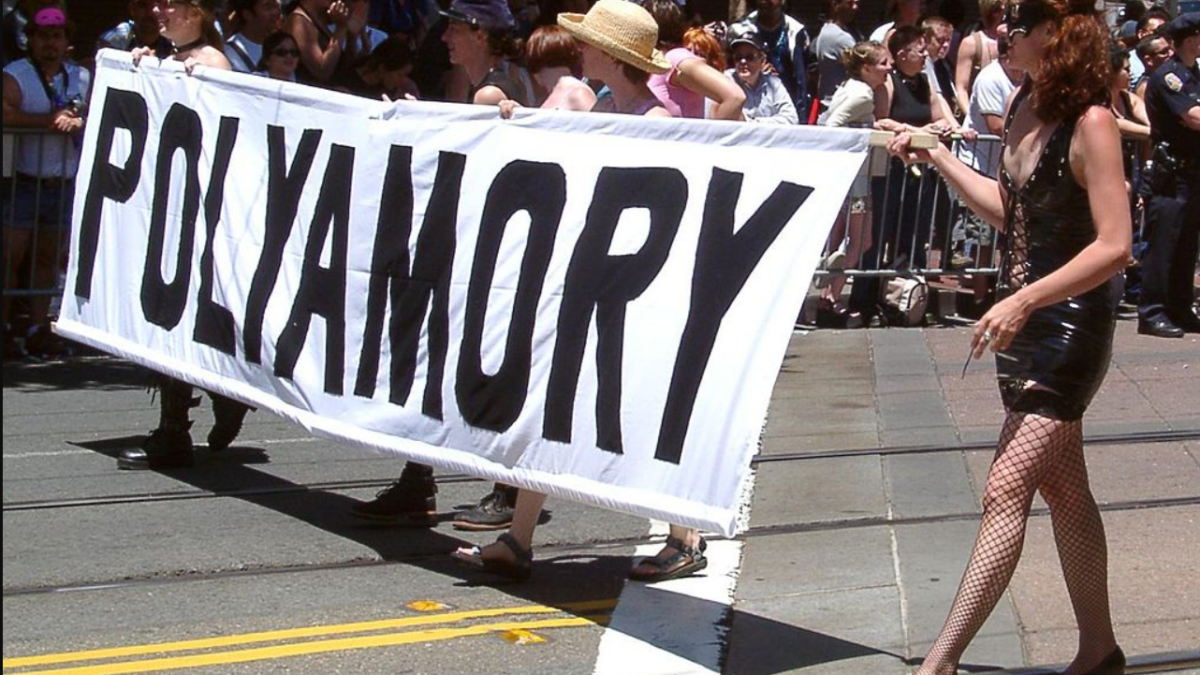
A few years ago transgenderism was a niche issue on the periphery of American consciousness. Now it is at the contentious center of our politics and culture. This is not an organic development but the result of a well-coordinated campaign. There was not a sudden surge in scientific understanding of gender dysphoria and how to treat it, but there was a surge in activist efforts and the media’s promotion of them.
The tale they tell is that gender identity is distinct from bodily sex, immutable and knowable even at a young age. Therefore, those with gender dysphoria should immediately begin to transition (the younger the better), living as the sex they identify with, taking drugs to prevent puberty, and eventually undergoing “gender-affirming” chemical treatments and surgeries. Preventing or delaying transition—or even questioning someone’s gender identity—will inflict serious psychological harm, perhaps even inducing suicide.
This story has been effective, but as Ryan Anderson’s latest book, When Harry Became Sally, demonstrates, it is false. Against the claims of transgender activists that opposition to their agenda is intrinsically bigoted and necessarily harmful, Anderson systematically develops a compassionate alternative grounded in sound science, medicine, and philosophy.
Like all of his work, the book is well-written and strikes a reasonable balance between scholarly detail and general accessibility. Extensive footnotes provide sources for readers who wish to check particular claims or engage in further research.
This volume may be the most thorough response to transgender ideology and activism yet written, but amidst the myriad of points he addresses, Anderson is most concerned with the truth about sex and gender, and with what is therefore best for individuals with gender dysphoria. Although he addresses public policy, he did not write this book to rage about locker rooms and pronouns. Rather, Anderson asks, “What is the most loving and helpful response to the condition of gender dysphoria, a profound and often debilitating sense of alienation from one’s bodily sex?” He answers that it is to try to reconcile persons to their bodies, rather than to embark on a course of irreversible chemical and surgical body modification.
Contradictory Beliefs
Anderson argues transgender ideology relies upon an erroneous view of human nature and identity, and that living by this falsehood precludes full human flourishing. This is why the philosophical claims transgender activists make are full of contradictions, especially when taken in conjunction with the claims of their allies.
For instance, we are told that gender is a social construct, and that it is an immutable innate identity. We are told it is misogynist to say that men and women have different brains, and that the basis for transgenderism is having the brain of the opposite sex. We are told that subjective identity is reality, and that biological reality must be modified to “affirm” subjective identity. We are told that a man can know innately what it is to be a woman, and vice versa, as if our true self consists of some sort of incorporeal gender essence.
What unites these disparate and contradictory philosophical threads is their objection to the givenness of existence, especially human embodiment. Philosopher Soren Kierkegaard captured the pathos and farce of such existential alienation well: “How did I come to be involved in this great enterprise called actuality? Why should I be involved in it? Am I not free to decide? Am I to be forced to be part of it? Where is the manager, I would like to make a complaint!” We are thrown into being under conditions we do not choose; this is the price of existence.
But dissatisfaction with the reality of embodiment does not provide a coherent account of human persons, let alone human flourishing within our given existence. So because they object to the nature of existence as such, transgender activists cannot provide a coherent basis for their ideology. To plead a metaphysical cause, (i.e., we are gendered souls that can sometimes be stuck in the wrong body) turns the discussion into a religious and metaphysical debate that they are ill-equipped for. To plead a physiological (i.e., gendered brains stuck in the wrong body) or psychological source invites solutions focused on reconciling minds to their bodies, rather than modifying bodies into facsimiles of the other sex.
In contrast, Anderson argues that gender dysphoria arises from a variety of distinct, but often overlapping, factors (for instance, adult male-to-female transitions often have a sexual component). Far from being immutable, gender identity can change, and proper treatment for gender dysphoria should seek to reconcile those suffering from it to their physical bodies.
The view that a gender identity at odds with a person’s biological sex is fixed, and the only effective treatment for such gender dysphoria is “transition,” is insupportable scientifically and philosophically. The assertion that only transition can keep patients with gender dysphoria from committing suicide is rhetorical hostage-taking belied by the high rates of suicide and other self-destructive behaviors among those who identify as transgender. Transitioning does not remedy the underlying problems that have led someone to disassociate from his or her body.
In addition to responding to the claims of transgender ideology, Anderson also presents a positive account of sex and gender. The former is our bodily organization toward reproduction. “Sex, in terms of males or females, is identified by the organization of the organism for sexually reproductive acts. Sex as a status—male or female—is a recognition of the organization of a body that has the ability to engage in sex as an act.”
This fundamental difference between men and women naturally produces secondary sexual differences, though it is not defined by them. This differentiation is not disproven by cases of abnormal sexual development. Dysfunction, deformity, and damage are unfortunate imperfections, not healthy alternatives to the sexual dimorphism of the human species.
Emulation and Annihilation
Gender is “how we give social expression” to the “bodily, biological reality” of sex. Thus, Anderson observes that gender “properly understood is a social manifestation of human nature…Human beings are creatures of nature and of culture, but a healthy culture does not attempt to erase our nature as male or female embodied beings.” Gender is artificial only in the sense that everything human is artificial. Art is human nature, and gender is therefore a natural artifice. The realities of human biology influence the rest of human existence, and it is possible to recognize this truth while avoiding rigid and unduly restrictive stereotypes regarding sex and gender.
In a predictable irony, the transgender movement often promotes strict gender roles by encouraging gender nonconformists to transition; persons who identify as transgender frequently take on the most stereotypical gender attributes of the sex they are trying to emulate. These points have led to tension in the LGBT coalition, as some effeminate gay men and butch lesbians believe transgender ideology is erasing their identities. This internecine conflict highlights the contradictions of transgender ideology and how it fragments a person instead of a seeking an integrated, unified whole.
While it is undoubtedly deeply distressing to feel that one should not be the sex that one is, no amount of social transition, hormones, or even surgical amputation and alteration will change the physical reality of one’s sex. Transgender-identified persons must define themselves by something they can never be. For a man to claim to become a woman is both an emulation and annihilation of the reality of womanhood. To establish a gender identity opposite of one’s physical sex is to always have civil war raging within oneself as a dominant passion tyrannizes over the rest of one’s body and soul. It is also to be at war with the world, if one attempts to force others to affirm one’s subjective identity as objective fact.
We must be compassionate toward those with gender dysphoria, recognizing the distress it often induces. But real compassion tells the truth and seeks to make people whole. Authentic identities that promote genuine human flourishing must be based on truth. No matter how much transgender activists succeed in enforcing their ideology, reality will persist. The most heartbreaking portion of Anderson’s book is the chapter devoted to persons who have detransitioned. Except for Walt Heyer, these are not people likely to share Anderson’s social conservatism, but their stories make it clear that transitioning is not always the right treatment for gender dysphoria.
Bullying Their Way to Victory
Even if some persons were better off transitioning, the problem of distinguishing between them and those whose gender dysphoria requires another response would remain. Unfortunately, the demands of activists harm the latter by pushing them into transition. Children are told that to be themselves, they have to permanently alter their bodies.
Anderson notes that activists in multiple states have succeeded in making it illegal for therapists to try to reconcile children with gender dysphoria to their bodies, so that “a doctor who helps a young boy socially and hormonally transition into a ‘girl’ does not violate the law, but a doctor who helps a young boy identify with and accept his body might be acting unlawfully.” Instead of protecting children, such ideologically motivated laws subject them to harmful treatments and irreversible body modifications.
Given time, an overwhelming majority (80 to 95 percent) of children with gender dysphoria will come to identify with their biological sex. However, transgender activists insist the only treatment for gender dysphoria is immediate transition, and they are threatening medical professionals to get it. Respected researchers and clinicians like Dr. Kenneth Zucker, many of whom endorse transition in some cases, have been demonized and driven from their positions because they would not fully embrace transgender activists’ radical agenda.
This is intimidation, not reasoned scientific consensus. The result is that children with gender dysphoria who would have naturally reconciled to their bodies are instead being pushed to transition, with irreversible amputations, chemical treatments, and a lifelong dependence on pharmaceuticals. This one-size-fits-all approach to treating children should disconcert even those who generally support the LGBT movement.
Despite the attempts of major LGBT activist groups and their media allies to present a unified front, real divisions have been created by the radicalism of transgender activists. For instance, some feminists have been driven into previously unthinkable alliances with social conservatives. Anderson points out many persons who identity as transgender do not share the radical views of the activists. Bruce/Caitlyn Jenner, likely the most famous trans-identifying person in American, seems to be in this category, and has been attacked for it by activists.
Unfortunately, the radical transgender activists are driving media coverage, public policy, and medical treatment. They do not wish for dialogue, discussion, or compromise; instead they seek to bully their way to victory. This is why the critical responses to Anderson have consisted of anecdotes and accusations of bigotry against him and his sources, rather than reasoned responses to his central claims. But for all its apparent momentum, we may hope that the transgender moment will soon pass.
The hatred and lies directed at even a careful scholar like Anderson reveal a movement that is brittle and afraid despite its triumphs. Its contradictions are unsustainable, and we should hope that treatments based not on ideology, but on compassion and the truth of our existence as embodied beings, will soon be provided to those suffering from gender dysphoria. Anderson’s book is an important response to an ideology that is hurting people, most of all the children who are having their natural physical development blocked and their bodies hormonally and surgically modified in an attempt to become something they can never be.









